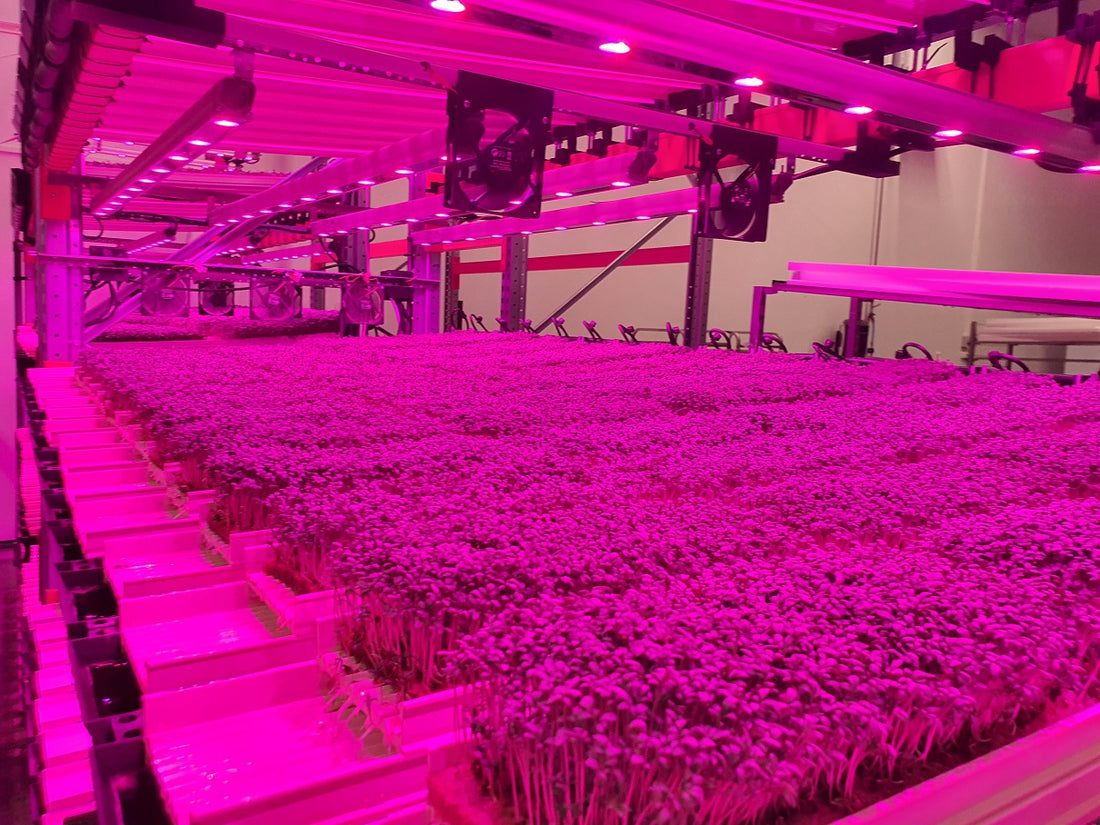Growing lights are a large topic in itself. What it comes down to is finding the lights that works well with what you grow but at the same time is affordable for your use case. I usually divide the lighting in to two catagories, hobbiest or commercial. If you are aiming to do a commercial operation down the line or is a commercial operation you will have to look more long term. If you are a hobbiest you are still testing and learning, investing i expensive lighting is a bit overkill if you don't know if this is something you will or not continue on with.
Growlights when it comes to microgreens is divided into T5 or LED lights. Yes there are other like Cermamic-Discharge Metal-Halide (CDM) or HPS (High Pressure Sodium. But they are used more for crops that need a lot of lights for example tomatoes, cucumbers, flowers or similair. They provide a lot of light compared too there watts needed but for microgreens it way to mush what they actually need. They also genereate alot of heat.
When we are look at lighting for microgreens we need lights with a lower wattage and good coverage.
This is why T5 and LED is a good option.
The large diffrence when it comes down to T5 and LED is usually:
-
Cost
-
heat generation
-
Energy effiency
Cost/Effiency
The diffrence between cost for LED and T5 is one of the first thing you will notice. LED is genereally more expensive then T5 especially up front.
The cost for a 120 cm, 39 watt T5 light can be around 40-50 €. They last generally around 7000-8000 hours (1 1/2 year).
The cost for a quality 120 cm, 24 watt LED light can be around 100€-140€. They last generally around 30 000-50 000 hours (6-8 years).
When you are a commercial operation the long term cost will be important. If you break down the cost for a T5 lights it will be around 35 € per year in cost per light. When it comes to LED around 15-18 € per year. This is just the cost saving for the lights. LED is also alot more energy efficient and will save up to about 50 % in energy savings . And when you add more and more lights this numbers becomes more important.
Heat
Heat starts to become a problem if you have many T5 lights because they generate a lot more heat then LED. This can of couse be good if you live futher up north during the winters.
The microgreens dosen't thrive when it gets to hot. Aslo the risk of burning the leaves is possible if they grow to close. To combat this you need more ventilation or a HVAC to cool down a grow area when you use T5 lights.
Extra
The lights use diffrent wavelengths, plants use some spectras more then others. In this case it's RED and BLUE wavelength. T5 Bluer (Cold) lights is 6400 kelvin, they promote a sturdy plant before we transplant them. When we grow microgreens we want to use more RED, this will promote more growth instead. So if you looking for a T5 light find the 3400 kelvin or white lights. When it's LED find lights with more RED then BLUE. Also we do not recommend to buy cheap LEDs, our experience has shown they have a tendency not to work well, the effect is that the microgreens will grow slow or be lanky.
If you are using Nordamark growing method we can provide commericaly LED with the correct light spectra and IP68 (protected against water). Picture below shows the results using the Nordamark growing method and LED.

